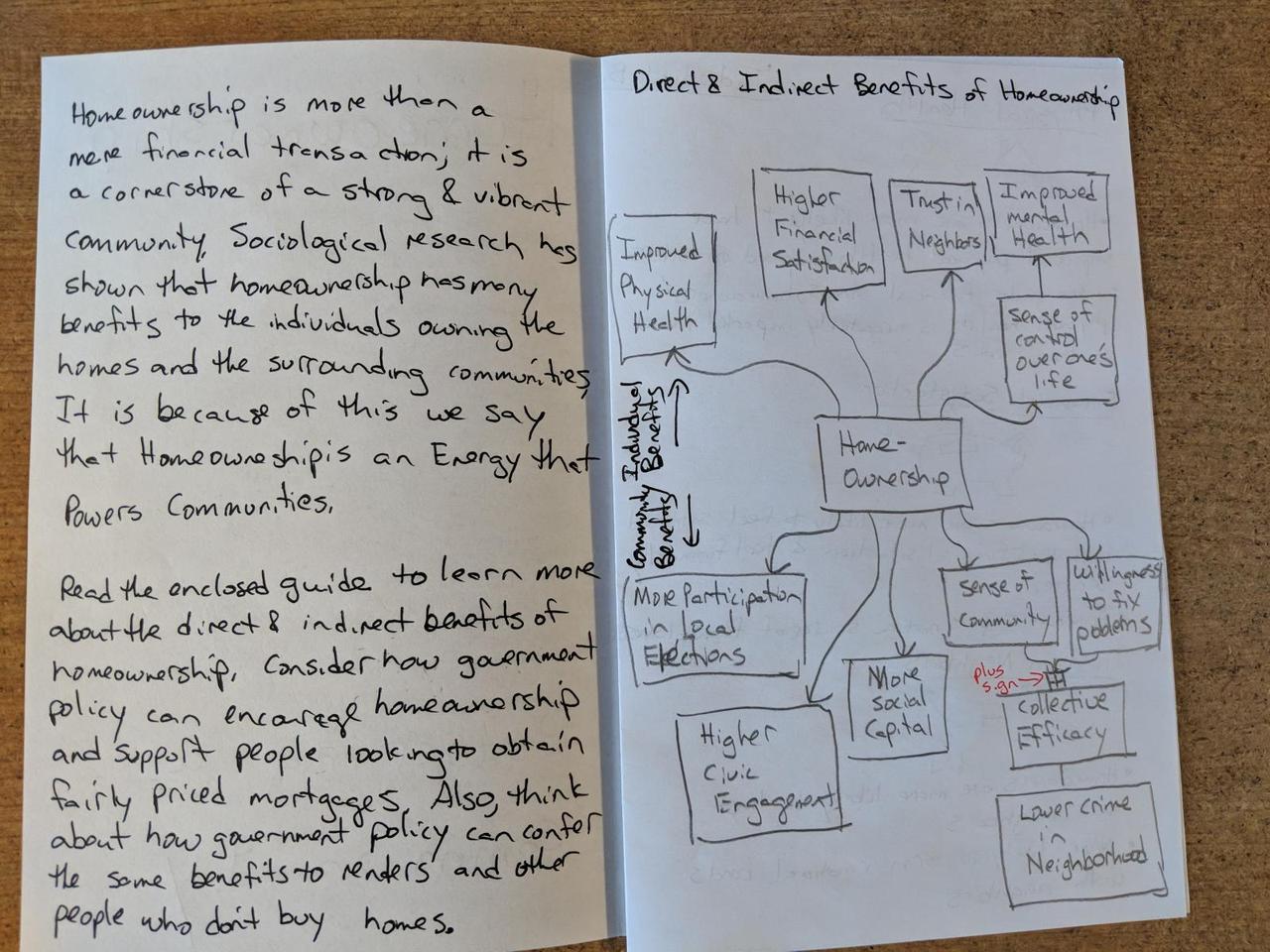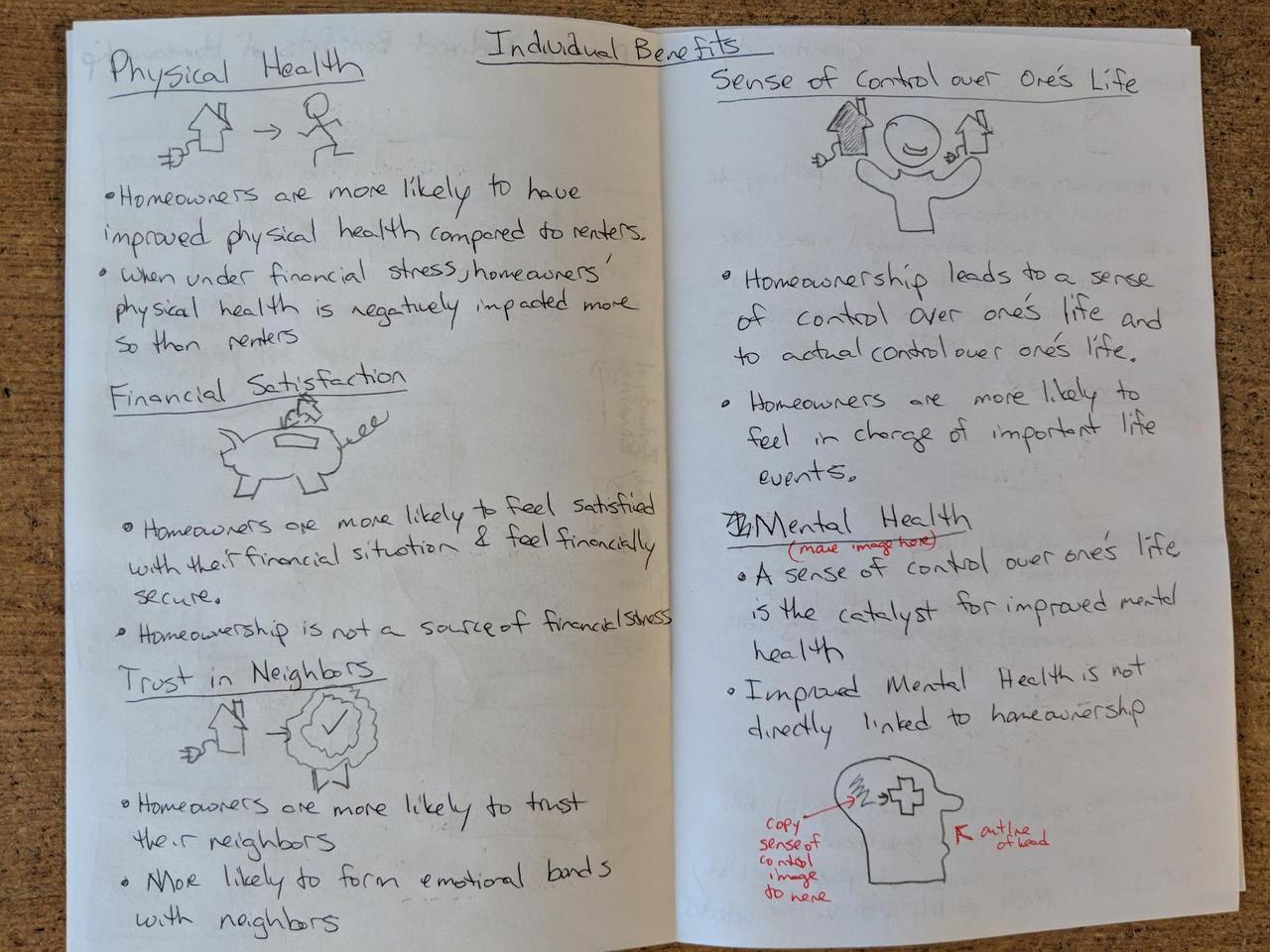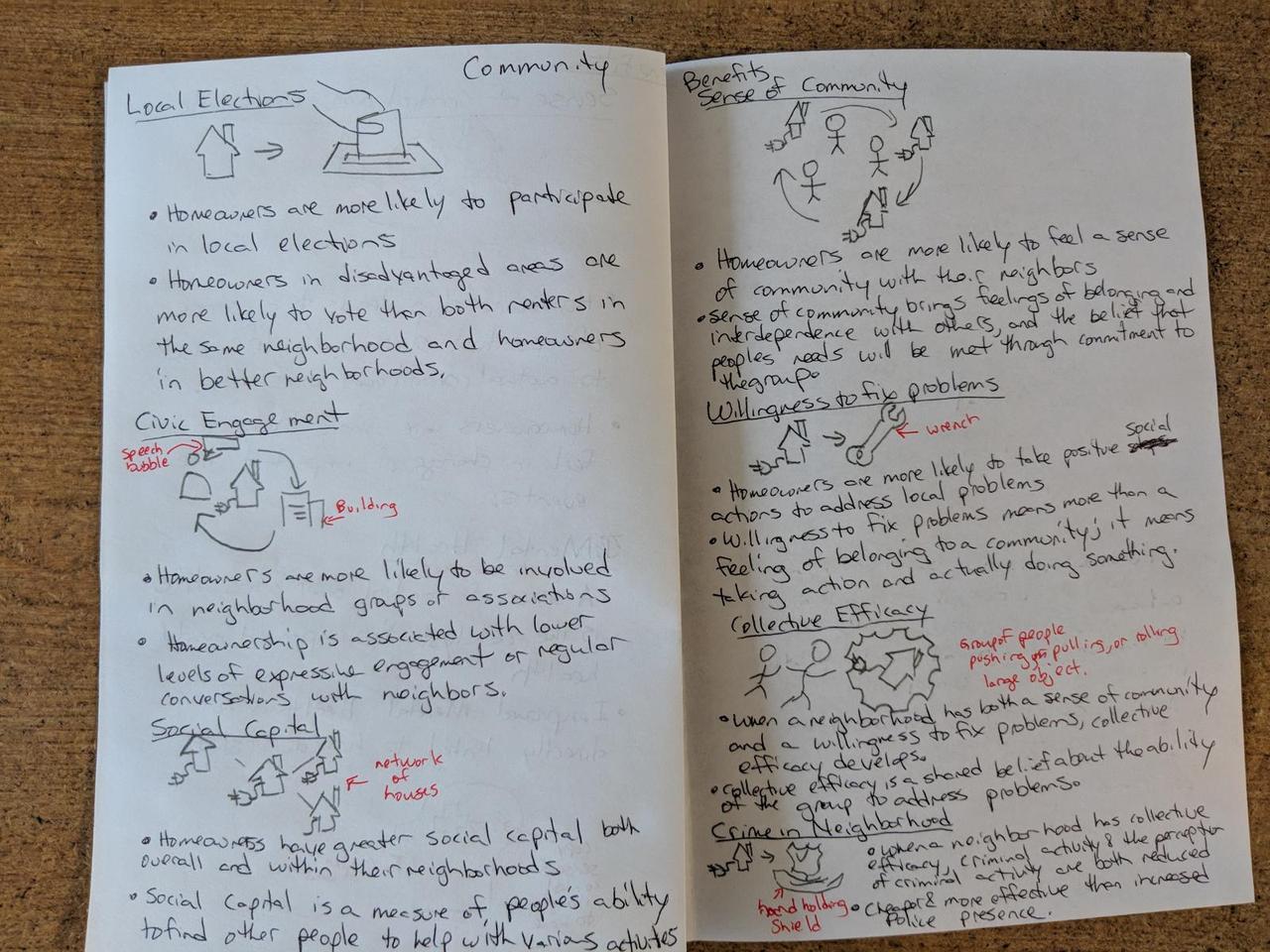Draft Field Guide
Building on my reworked taxonomy and field guide entries I created a draft version of my field guide. I'm pleased that this is coming together in a way that makes sense and that I'm comfortable with.
Visual System
We need to use some kind of visual system to employ metaphor or metonymy to organize and communicate information. A visual system will provide context to help people process and remember information.
My field guide title is "Homeownership: Powering a Community." I would like to relate a home to energy. My vision to achieve that is to start with a silhouette of a typical house, shaped like the green monopoly houses most people are used to. Then I will add a power cord coming out the side of it to relate it to energy and power. I then reuse this in images for each entry in my field guide.
Visualizing some of the field guide entries like "collective efficacy" and "willingness to fix problems" was rather challenging. To help I searched through the Noun Project to inspire ideas.
Draft Field Guide
Below are some pictures of my draft field guide along with explanations of my drawings.
First, cover of the field guide. The goal is to draw a monopoly-type house with a power cord coming out of it. The house is lit up and surrounded by a circle of smaller houses that are rotating around the center house.

Next, the inside cover. The map is a rearranged version of the map I used in my previous post.
Note: anything in red is a note to the reader to make up for what my crude pencil drawings cannot communicate.

I thought it made the most sense to put the individual benefits together on matching pages. The visual images will relate to each other to properly show the direct and indirect relationships.

Next, community benefits. This one is a bit crowded. I will have to think carefully about the layout here.

And the back of the field guide. I thought it made sense to cite the research the information in this field guide came from. Also, I should reuse the powered house image.

Field Guide Entries
The field guide text might be hard to read through those pictures. For completeness the entries are repeated below.
Homeownership is more than a mere financial transaction; it is a cornerstone of a strong and vibrant community. Sociological research has shown that homeownership has many benefits to the individuals owning the homes and and the surrounding communities. It is because of this we say that Homeownership is an Energy that Powers Communities.
Read the enclosed guide to learn more about the direct and indirect benefits of homeownership. Consider how government policy can encourage homeownership and support people looking to obtain fairly priced mortgages. Also, think about how government policy can confer the same benefits to renters and other people who don’t buy homes.
Physical Health
Homeowners are more likely to have improved physical health compared to renters
When under financial stress, homeowners’ physical health is negatively impacted more so than renters under financial stress
Higher Financial Satisfaction
Homeowners are more likely to feel satisfied with their financial situation and feel financially secure
Homeownership is not a source of financial stress
Trust in Neighbors
Homeowners are more likely to trust their neighbors
More likely to form emotional bonds with neighbors
Sense of Control Over One’s Life
Homeownership leads to a sense of control over one’s life and to actual control over one’s life
Homeowners are more likely to feel in charge of important life events
Improved Mental Health
A sense of control over one’s life is the catalyst for improved mental health
Improved mental health is not directly linked to home ownership
More Participation in Local Elections
Homeowners are more likely to participate in local elections
Homeowners in disadvantaged areas are more likely to vote than both renters in the same neighborhood and homeowners in better neighborhoods
Higher Civic Engagement
Homeowners are more likely to be involved in neighborhood groups or associations
Homeownership is associated with lower levels of expressive engagement or regular conversations with neighbors
More Social Capital
Homeowners have greater social capital both overall and within their neighborhoods
Social capital is a measure of people’s ability to find other people to help with various activities
Sense of Community
Homeowners are more likely to feel a sense of community with their neighbors
Sense of community brings feelings of belonging and interdependence with others, and the belief that people’s needs will be met through commitment to the group.
Willingness to Fix Problems
Homeowners are more likely to take positive social actions to address local problems
Willingness to fix problems means more than a feeling of belonging to a community; it means taking action and actually doing something
Collective Efficacy
When a neighborhood has both a sense of community and a willingness to fix problems, collective efficacy develops
Collective efficacy is a shared belief about the ability of the group to address problems
Lower Perceived Crime in Neighborhood
When a neighborhood has collective efficacy, criminal activity and the perception of criminal activity are both reduced
Cheaper and more effective than increased police presence
I have some questions about the entries. Are bullet points the right format? Should I provide more detail? Is this the right amount of information? Are the visuals appropriate and convincing?
I'm looking forward to getting feedback today during class.
Engaging with a Working Participant
For this week we were also asked to engage with a working participant in the field to help our research process. I did reach out to Esther Robinson of Arthome and heard back from her but we haven't been able to schedule a time to talk on the phone. That will take place this week.
Comments